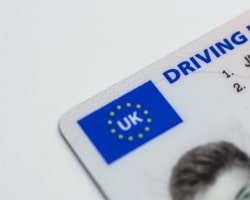How can you tell if a top fake ID is scan. In a world where boundaries blur between the virtual and the tangible, where identities are both meticulously curated and easily fabricated, the allure of the “top fake ID” resonates as a symbol of this complex modern age. As technology advances and societies evolve, so too do the means by which individuals navigate the intricate web of regulations and age restrictions. The realm of counterfeit identification has transcended its conventional connotations, morphing into a multifaceted issue that raises questions about personal privacy, security, and the ever-shifting concept of authenticity.
Imagine a digital underworld where ingenious minds harness the power of innovation to create near-perfect replicas of official documents, enabling access to domains once considered off-limits. This intriguing phenomenon delves beyond the realms of mere deception; it probes the very essence of human nature’s quest for freedom and autonomy. The pursuit of the “top fake ID” intertwines threads of rebellion and necessity, offering an exploration into the moral gray areas that arise when personal desires clash with societal norms.
But beyond the surface, beyond the clandestine allure, lies a tapestry of ethical dilemmas and legal implications. What drives individuals to invest in these fabricated personas, and what are the consequences of such actions? Is it an act of defiance against a system perceived as oppressive, or merely a means of bypassing inconveniences? This intricate dance between the digital and the real, the authentic and the counterfeit, beckons us to delve deeper into the psyche of a generation grappling with the concept of identity in an era defined by its technological prowess.
In this narrative, we will unravel the layers of the “top fake ID,” examining its evolution, motivations, and societal resonance.
How can you tell if a top fake ID is scan
This guide delves into the depths of the world of counterfeit IDs, examining their evolution, motivations, methods, and the ethical implications that surround them. For more information click here.
Evolution and Motivations
The origins of counterfeit IDs can be traced back to historical contexts where individuals sought to escape restrictions or persecution. However, in today’s digital era, the motivations have expanded to encompass a wide array of factors:
Evasion of Age Restrictions:
Counterfeit IDs have become synonymous with underage individuals seeking entry into bars, clubs, or purchasing alcohol and tobacco. The allure of appearing older than one’s actual age drives the demand for these falsified documents.
Access to Restricted Spaces:
Beyond age-related restrictions, top fake ID are often employed by individuals looking to gain access to events, venues, or areas they wouldn’t otherwise be allowed into.
Online Identity Manipulation:
Counterfeit IDs extend beyond the physical realm into the digital sphere, allowing individuals to create false online personas for various reasons, from cyberbullying to fraud.
Methods and Techniques
Traditional Counterfeiting:
This method involves creating physical replicas of official IDs, utilizing advanced printing techniques, high-quality materials, and even holographic elements to mimic the original.
Digital Manipulation:
In an age of technology, digital manipulation has become increasingly prevalent. Advanced software tools allow for the alteration of scanned ID images, creating a realistic facsimile.
Dark Web Marketplaces:
The dark web hosts a plethora of marketplaces where counterfeit IDs are bought and sold, often using cryptocurrency for anonymity. These IDs can be shipped globally, making this method hard to trace.
Legal and Ethical Ramifications
Legal Consequences:
The creation, possession, or usage of top fake ID is in most jurisdictions and can lead to criminal charges, fines, and even imprisonment. Additionally, those caught may face social and academic consequences.
Societal Trust:
The proliferation of counterfeit IDs erodes the trust that underpins societal structures. It challenges the integrity of security systems and raises concerns about the effectiveness of age-related regulations.
Ethical Dilemmas:
The use of top fake ID raises complex ethical questions. Is it a form of harmless rebellion against authority or a breach of social norms? Is it a necessary means for personal freedom, or a shortcut that disregards the rules?
Mitigation and Prevention
Technological Countermeasures:
Government agencies and organizations continually upgrade security features on official IDs to make counterfeiting more challenging. These measures include holograms, UV printing, and microprinting.
Educational Campaigns:
Raising awareness about the legal, social, and ethical consequences of using top fake ID can deter individuals from pursuing this path. Schools, parents, and communities can play a role in educating young people.
Tightened Regulations:
Some regions have explored stricter regulations, such as harsher penalties for possession or usage of fake IDs. While this approach might dissuade potential users, it also sparks debates about civil liberties.
Conclusion:
The world of counterfeit IDs is a complex, multifaceted realm that intertwines technology, personal desires, societal norms, and legal boundaries. While it may seem tempting to engage in this realm, it’s crucial to consider the broader implications. As technology advances and society evolves, the ethical and legal debates surrounding fake IDs will continue to shape our understanding of identity, autonomy, and trust. Whether one seeks the “top fake ID” for reasons of adventure or necessity, it’s a journey that forces us to grapple with questions that delve deep into the heart of modern existence.
Related guides :


